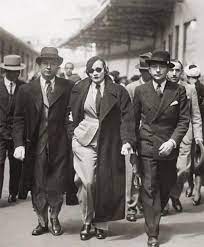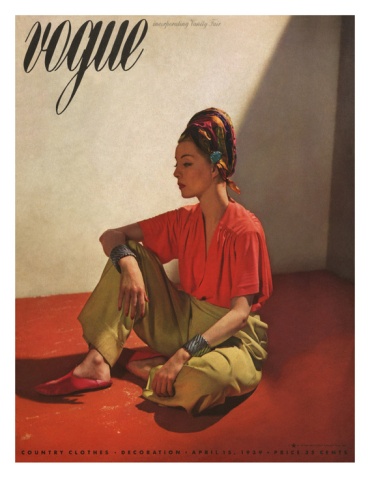 I am currently writing the sixth Bunch Courtney Investigation (working title Party to Murder) and for the sake of verisimilitude thought I should see how common it was for women to wear trousers beyond boiler suits and fatigues in factory and military work parties or the famous Land Army jodhpurs.
I am currently writing the sixth Bunch Courtney Investigation (working title Party to Murder) and for the sake of verisimilitude thought I should see how common it was for women to wear trousers beyond boiler suits and fatigues in factory and military work parties or the famous Land Army jodhpurs.
I was reasonably sure there were no legal cases related to the wearing of trousers by British women but because of my heroine’s need to cover her leg injured in the line of duty (twice!) I wanted to make sure of my facts as I know from experience that assumptions of historical fact can so often be wrong.
Illegal to wear trousers you say? Surely not… Read on!
 On a previous dive into research I came across the slim volume Court in the Act : Crime and Policing in WWII Hastings that speaks of a young women being reprimanded for appearing improperly dressed in a Hastings (Sussex) magistrate’s court– i.e. she was not wearing a hat. This 18 year old girl was fined £1 for driving without a licence but going hatless, it seems, broke social convention rather than any laws. As wartime rationing of clothes came into being the hat-habit went into decline, though going out in public without a hat or headscarf was still viewed as a little ‘fast’ in many eyes.
On a previous dive into research I came across the slim volume Court in the Act : Crime and Policing in WWII Hastings that speaks of a young women being reprimanded for appearing improperly dressed in a Hastings (Sussex) magistrate’s court– i.e. she was not wearing a hat. This 18 year old girl was fined £1 for driving without a licence but going hatless, it seems, broke social convention rather than any laws. As wartime rationing of clothes came into being the hat-habit went into decline, though going out in public without a hat or headscarf was still viewed as a little ‘fast’ in many eyes.
 So what about trousers and the law?
So what about trousers and the law?
I expected to find Hollywood stars such as Dietrich and Garbo making a splash in the late 1930s with trouser fashions, and so they did, causing quite a stir in many places. Imagine my surprise to read that in certain US cities in the late 1800s trouser wearing for women was made illegal. Famous surgeon and abolitionist Mary Walker was arrested several times for ‘wearing male apparel’ and records show that her insistence on wearing them was better received in Britain than her native America. The Great War and emancipation seemed to bring most of the trouser laws to an end, and it was doubtless the appearance of Eleanor Roosevelt at an official function in 1933 that finally made trouser-wearing acceptable.
 Similar anti-trews laws existed in France and indeed Marlene Dietrich was famously detained at a Paris train station in 1933 for contravening that rule, which I am told was only repealed in 2013…
Similar anti-trews laws existed in France and indeed Marlene Dietrich was famously detained at a Paris train station in 1933 for contravening that rule, which I am told was only repealed in 2013…
So far as I can see Britain had never had such laws.
As in America it was women taking up traditionally male work in the Great War and woman finally gaining the vote in the 1920s that broke down remaining social taboos.
As society rules relaxed women wore jodhpurs for riding horses and motorcycles or fly planes. They wore shorts for football (women’s football was huge in the UK during WW1 until 1921 when the FA banned them from playing on official FA pitches…) The British craze for walking and cycling holidays in the 1920s and 30s also had a hand in fashionable leisure wear leaning toward slacks and shorts (though it would be the 1960s before jeans became a thing).
Clothes rationing was rolled out in the UK in 1941 and as their clothes and precious coupons were saved for growing children woman resorted increasingly to raiding the wardrobes of their absent uniform-wearing husbands away in the forces to replace their worn out work wear.
 Despite all of the above, including Vogue magazine’s ‘The Case for Slacks’ special in 1939, it seems that skirts and dresses were still the norm for women in general and most still preferred to ‘dress up’ for social occasions. But the Hon. Rose (Bunch) Courtney can be at ease as a rebel in Oxford bags.
Despite all of the above, including Vogue magazine’s ‘The Case for Slacks’ special in 1939, it seems that skirts and dresses were still the norm for women in general and most still preferred to ‘dress up’ for social occasions. But the Hon. Rose (Bunch) Courtney can be at ease as a rebel in Oxford bags.


Reblogged this on Misha Herwin and commented:
Fascinating and little known facts about trouser wearing by women.
LikeLike